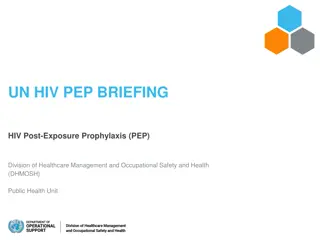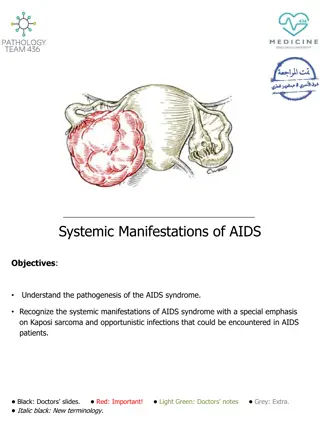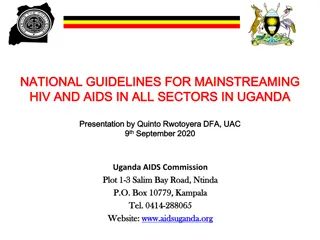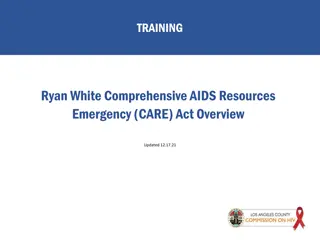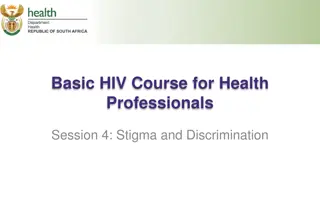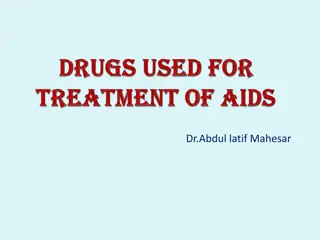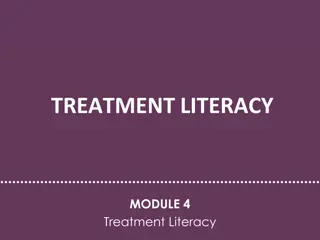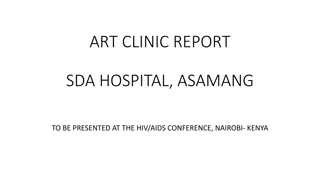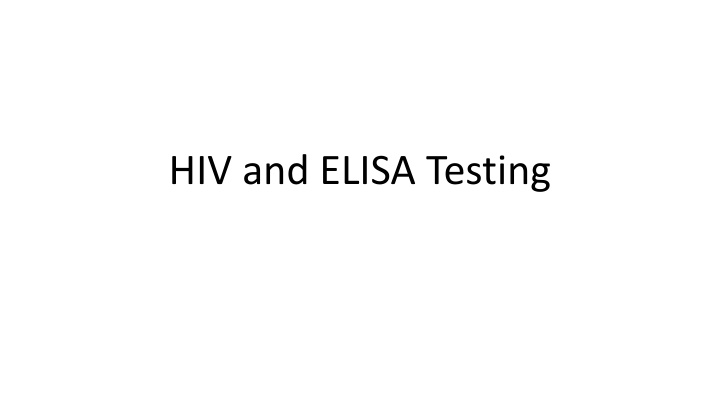
HIV and AIDS Transmission and Progression
HIV, a retrovirus, attacks Helper T Cells and can progress to AIDS if left untreated. Learn about transmission, stages, factors affecting disease progression, and treatment options like antiretroviral therapy. Stay informed to protect yourself and others.
Download Presentation

Please find below an Image/Link to download the presentation.
The content on the website is provided AS IS for your information and personal use only. It may not be sold, licensed, or shared on other websites without obtaining consent from the author. If you encounter any issues during the download, it is possible that the publisher has removed the file from their server.
You are allowed to download the files provided on this website for personal or commercial use, subject to the condition that they are used lawfully. All files are the property of their respective owners.
The content on the website is provided AS IS for your information and personal use only. It may not be sold, licensed, or shared on other websites without obtaining consent from the author.
E N D
Presentation Transcript
HIV Human Immunodeficiency Virus retrovirus uses reverse transcription RNA to make viral DNA attacks the Helper T Cells (also called CD4) host cell killed as viruses release
HIV Affects Helper T Cells helper T cells are also known as CD4 cells normal counts range from 500 to 1500 cells per cubic millimeter of blood (cells/mm3) initially in HIV infection there is a sharp drop in the CD4 count count levels off to around 500-600 cells/mm3
Transmission sexual transmission sharing contaminated needles blood products from mother to baby from birth or nursing
Progression/Stages of HIV acute infection stage 2-4 weeks after infection many experience flu-like symptoms body s natural immune response to infection clinical latency stage experience no HIV-related symptoms HIV continues to reproduce at very low levels
AIDS autoimmune deficiency syndrome HIV positive with a CD4 cell count below 200 cells/mm3 HIV has damaged the immune system so people are more vulnerable to opportunistic infections without treatment people who progress to AIDS survive about 3 years with treatment some people will never progress to AIDS and will have a normal life expectancy
Factors Affecting Disease Progression factors that may shorten time between HIV and AIDS older age HIV subtype (different strains) co-infections with other viruses poor nutrition severe stress
factors that may lengthen the time between HIV and AIDS antiretroviral therapy HIV Cocktail nucleoside reverse transcriptase inhibitors (NRTI) competes with the enzyme to stop reverse transcription non-nucleoside reverse transcriptase inhibitors (NNRTI) inhibits the enzyme to stop reverse transcription protease inhibitors blocks the cleaving of proteins required for the virus to mature entry/fusion inhibitors integrase inhibitors blocks the integration of viral DNA into host cell genome
Statistics In 1995, the number 1 cause of death for ages 25 44 in U.S As of December 31, 2011, a cumulative total of 9,785 persons have been diagnosed and reported with HIV infection in Minnesota. 3,788 persons have been diagnosed with HIV infection (non-AIDS) 5,997 have progressed to AIDS Of these 9,785 persons, 3,347 are known to be deceased Data Taken from MN Department of Health
ELISA Testing Enzyme-Linked Immunosorbent Assay based on immune system antibodies can detect antibodies in someone s blood serum or the presence of an antigen/protein in a sample several applications: diagnostic tool in medicine (diseases, pregnancy) plant pathology quality control in industry forensics
How does an ELISA work? uses an antibody that is linked to an enzyme enzyme will then react with its substrate and create a color change color change = positive result if used to detect the antigen itself one antibody linked with an enzyme is used
if used to detect presence of antibodies a secondary antibody is used (linked to an enzyme) primary antibody is in the serum sample secondary antibody binds to the primary antibody
Using ELISA to detect HIV infection most common HIV test detects the presence of HIV antibodies after 4-8 weeks of exposure, the body will have produced detectable levels of antibodies for the HIV protein antigens



